Theory and Design in the Age of New Objectivity
Educational lectures, training sessions, and workshops
by Mariano Akerman
Fifteen educational activities in 12 sessions. The fifteen activities of The Gestalt Program are developed along/in 12 sessions. Thus, the following information doesn't contradict anything printed in the event brochure: the activities are all in all 15, but they take place as 12 sessions (meetings). The length of activities nos. 2-3, 7-8, and 10-11 equals a total of 9 (not 6) lectures; the duration of those activities is 2 hours per session (instead of an hour per session).
1. The Gestalt Program as Meaningful Configuration
The Swiss Residence, 90 Participants
2. The Theory of Perceptual Organization
3. The Bauhaus
Islamabad College for Girls, 1500 participants
4. Gestalt in the Collage
International School Islamabad, 25 participants
5. La idea de collage y su relación con el todo integrado
Departamento de Español, NUML, 20 participants
6. Collage et intégration : La théorie de la Gestalt et les arts visuels modernes
Alliance Française d'Islamabad, 12 participants
7. Gestalt Theory and Bauhaus Design
8. The Interplay Form and Function in the Age of New Objectivity
COMSATS University, 400 participants
9. Artistic Expressions from The Golden Twenties
Seminaire des Arts, 25 participants
10. Gestalt and Education
11. The Bauhaus and the Emergence of Functionalism
Post-Graduate College for Women, Rawalpindi, 500 participants
12. The German-Swiss Contribution to the Age of New Objectivity: On Erich Mendelsohn and Paul Klee
Embassy of Germany, 140 participants
What is Gestalt? A fuzzy term imported from German, meaning "whole" and used to denote the integrated whole; its organic unity. Although often translated as "form," Gestalt refers to the notions of configuration, pattern, and structure. In general, Gestalt has to do with the idea of a complete system (the totality rather than an aggregate of distinct parts or components). Thus, Gestalt is any physical, biological, psychological, or symbolic configuration or pattern of elements so unified as a whole that its properties cannot be derived from a simple summation of its parts. In psychology, Gestalt is a perceptual pattern or structure possessing qualities as a whole that cannot be described merely as a sum of its parts. The original Gestalt school of psychology was founded by Max Wertheimer, Kurt Koffka, and Wolfgang Köhler.
Gestalt also refers to the early twentieth-century school of psychology that provided the foundation for the modern study of perception (Theory of Perceptual Organization). The German term Gestalt, referring to how a thing has been "put together" (gestellt), is often translated as "pattern" or "configuration" in psychology. The Gestalt school of psychology is holistic and affirms that the integrated whole of anything is different from the sum of its parts.
Experiment Times: Tradition meets Modernization
„Gestalt” is the German word for pattern. Although often translated into English as "form," Gestalt refers above all to the idea of “wholeness.” Thus, Gestalt is any structure, configuration, or pattern of physical, biological, or psychological phenomena so integrated as to constitute a unit, with properties which are not derivable from the sum of its parts.
The Gestalt Program has been conceived for Pakistani audiences. Focusing on the Swiss-German contribution to theory and design in the 1920s, the Gestalt Program aims at sharing experience and reconsidering the interplay between tradition and modernization.
Over 2500 students have been invited to participate in the Gestalt Program.
Gestalt theory and Bauhaus design are two of the important themes to be explored in this cycle of fifteen lectures, training sessions, and workshops conceived by Mariano Akerman. Figure and ground, chance and intention, form and function, the rational and the irrational, repression and expression are discussed in the Program, which reconsiders the modern idea of form and function integrated in a single, effective whole.
Yet, significantly, close observation may reveal that modernity is not only based on functionality and common sense, as it may present surprises too. Besides, is ornament a crime? Tradition has often associated it with identity. Can abstraction and mass-produced fabrications provide it? And what is the common raison d'être supporting the work of German-Swiss creators so diverse as Walter Gropius, Arp, Alberto Giacometti, Le Corbusier, Meret Oppenheim, Mies van der Rohe, Johannes Itten, Paul Klee, and Max Ernst?
A possible answer could be experimentation. And during the 1920s those and other art researchers provided us with admirable, fully modern creations. Inspired by their experimental approach and including a full-of-prizes collage contest, the Gestalt Program aims to open a window towards the achievements of relatively distant cultures, stimulating local productivity and inventiveness, without rejecting identities or traditions.
Quotations
Form and function should be one. —The main principle in Bauhaus design
Architects, painters, and sculptors must recognize anew and learn to grasp the composite character of a building both as an entity and in its separate parts. [...] A modern, harmonic and lively architecture is the visible sign of an authentic democracy. —Walter Gropius
The house is a machine for living in. —Le Corbusier
Art does not reproduce the visible, rather, it makes visible. —Paul Klee
Si ce sont les plumes qui font le plumage, ce n'est pas la colle qui fait le collage. | Feathers may make plumage, but glue does not make collage. —Max Ernst
Like clouds, the forms of the world flow one into the other. The more immediately they unit, the closer they are to the essence of the world. When the physical vanishes, the essence radiates. | Opposites mingle, entwine, dissolve. This removal of boundaries is the road which leads to the essential.—Jean Arp
Less is more. —Ludwig Mies van der Rohe
Nobody will give you freedom. You have to take it. —Meret Oppenheim
The aim of totalitarian education has never been to instill convictions but to destroy the capacity to form any. —Hannah Arendt
The principal goal of education in the schools should be creating men and women who are capable of doing new things, not simply repeating what other generations have done. —Jean Piaget
Not everything that can be counted counts and not everything that counts can be counted. | Imagination is more important than knowledge. For knowledge is limited, whereas imagination embraces the entire world, stimulating progress, giving birth to evolution. | Learn from yesterday, live for today, hope for tomorrow. The important thing is not to stop questioning. | Two things awe me the most: the starry heavens above and the moral universe within.* —Albert Einstein
* Einstein paraphrases Immanuel Kant, Critique of Pure Reason, 1788: "Two things fill the mind with ever-increasing wonder and awe, the more often and the more intensely the mind of thought is drawn to them: the starry heavens above me and the moral law within me." Original words: "Zwei Dinge erfüllen das Gemüt mit immer neuer und zunehmender Bewunderung und Ehrfurcht, je öfter und anhaltender sich das Nachdenken damit beschäftigt: Der bestirnte Himmel über mir, und das moralische Gesetz in mir" (Kritik der praktischen Vernunft, Beschluß).
Terminology
Kunstgeschichte – Art History
Neue Sachlichkeit – New Objectivity
Gesamtkunstwerk – A total, all-encompassing artwork
Einfühlung – Empathy
Prägnanz – Conciseness and effectiveness
Mariano Akerman, Architect and Art Historian
Born in Buenos Aires in 1963, Mariano Akerman studied at the School of Architecture and Urbanism of Universidad de Belgrano, completing his education with a prized graduation project (1987).
From 1991 onwards, he researched the nature and significance of the grotesque in Francis Bacon's paintings, and the evocative character of Louis I. Kahn's architectural projects. In Asia, Akerman has conceived and developed various cycles of educational lectures such as Belgian Art (2005), In the Spirit of Linnaeus (2007), Raisons d’être (2008-10), German Art (2010), and Art in the Picture (2010-11).
Specializing in visual communication, Akerman is an experienced educator. He gives lectures on art and design at renowned institutions among which the Museo Nacional de Bellas Artes in Buenos Aires and the National Museum of the Philippines in Manila. An artist himself, Mariano Akerman exhibits his paintings and collages since 1979. He has been awarded with twelve major international prizes.
Bridging Cultures. "One of the good things about life in Islamabad these days is the sparkling presence of Mariano Akerman. Combining a formidable knowledge of the art canon with his exceptional skills as a teacher, the Argentinean painter and art historian [...] has an unusual capacity to enthrall his audience. One of a rare breed, he is a scholar who delights as much as he informs. [...] It is the combination of his intoxicating enthusiasm with his breadth of interest as an independent scholar that enthralls Mariano’s listeners" (Sara Mahmood).
Educational lectures, training sessions, and workshops
by Mariano Akerman
Fifteen educational activities in 12 sessions. The fifteen activities of The Gestalt Program are developed along/in 12 sessions. Thus, the following information doesn't contradict anything printed in the event brochure: the activities are all in all 15, but they take place as 12 sessions (meetings). The length of activities nos. 2-3, 7-8, and 10-11 equals a total of 9 (not 6) lectures; the duration of those activities is 2 hours per session (instead of an hour per session).
1. The Gestalt Program as Meaningful Configuration
The Swiss Residence, 90 Participants
2. The Theory of Perceptual Organization
3. The Bauhaus
Islamabad College for Girls, 1500 participants
4. Gestalt in the Collage
International School Islamabad, 25 participants
5. La idea de collage y su relación con el todo integrado
Departamento de Español, NUML, 20 participants
6. Collage et intégration : La théorie de la Gestalt et les arts visuels modernes
Alliance Française d'Islamabad, 12 participants
7. Gestalt Theory and Bauhaus Design
8. The Interplay Form and Function in the Age of New Objectivity
COMSATS University, 400 participants
9. Artistic Expressions from The Golden Twenties
Seminaire des Arts, 25 participants
10. Gestalt and Education
11. The Bauhaus and the Emergence of Functionalism
Post-Graduate College for Women, Rawalpindi, 500 participants
12. The German-Swiss Contribution to the Age of New Objectivity: On Erich Mendelsohn and Paul Klee
Embassy of Germany, 140 participants
 |
| Gestalt Principles. 12 Examples. A composition by Mariano Akerman The whole is different from the sum of its parts Theory of Perceptual Organization |
What is Gestalt? A fuzzy term imported from German, meaning "whole" and used to denote the integrated whole; its organic unity. Although often translated as "form," Gestalt refers to the notions of configuration, pattern, and structure. In general, Gestalt has to do with the idea of a complete system (the totality rather than an aggregate of distinct parts or components). Thus, Gestalt is any physical, biological, psychological, or symbolic configuration or pattern of elements so unified as a whole that its properties cannot be derived from a simple summation of its parts. In psychology, Gestalt is a perceptual pattern or structure possessing qualities as a whole that cannot be described merely as a sum of its parts. The original Gestalt school of psychology was founded by Max Wertheimer, Kurt Koffka, and Wolfgang Köhler.
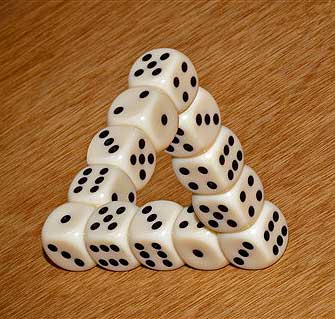 |
| An impossible structure? |
Gestalt also refers to the early twentieth-century school of psychology that provided the foundation for the modern study of perception (Theory of Perceptual Organization). The German term Gestalt, referring to how a thing has been "put together" (gestellt), is often translated as "pattern" or "configuration" in psychology. The Gestalt school of psychology is holistic and affirms that the integrated whole of anything is different from the sum of its parts.
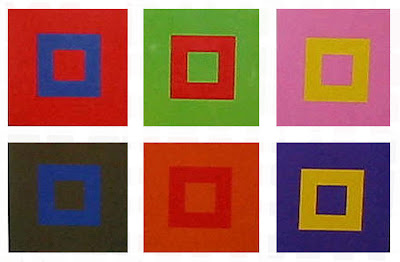 |
| Johannes Itten, Studies of Color, Bauhaus, 1919-22 |
Experiment Times: Tradition meets Modernization
„Gestalt” is the German word for pattern. Although often translated into English as "form," Gestalt refers above all to the idea of “wholeness.” Thus, Gestalt is any structure, configuration, or pattern of physical, biological, or psychological phenomena so integrated as to constitute a unit, with properties which are not derivable from the sum of its parts.
The Gestalt Program has been conceived for Pakistani audiences. Focusing on the Swiss-German contribution to theory and design in the 1920s, the Gestalt Program aims at sharing experience and reconsidering the interplay between tradition and modernization.
Over 2500 students have been invited to participate in the Gestalt Program.
Gestalt theory and Bauhaus design are two of the important themes to be explored in this cycle of fifteen lectures, training sessions, and workshops conceived by Mariano Akerman. Figure and ground, chance and intention, form and function, the rational and the irrational, repression and expression are discussed in the Program, which reconsiders the modern idea of form and function integrated in a single, effective whole.
Yet, significantly, close observation may reveal that modernity is not only based on functionality and common sense, as it may present surprises too. Besides, is ornament a crime? Tradition has often associated it with identity. Can abstraction and mass-produced fabrications provide it? And what is the common raison d'être supporting the work of German-Swiss creators so diverse as Walter Gropius, Arp, Alberto Giacometti, Le Corbusier, Meret Oppenheim, Mies van der Rohe, Johannes Itten, Paul Klee, and Max Ernst?
A possible answer could be experimentation. And during the 1920s those and other art researchers provided us with admirable, fully modern creations. Inspired by their experimental approach and including a full-of-prizes collage contest, the Gestalt Program aims to open a window towards the achievements of relatively distant cultures, stimulating local productivity and inventiveness, without rejecting identities or traditions.
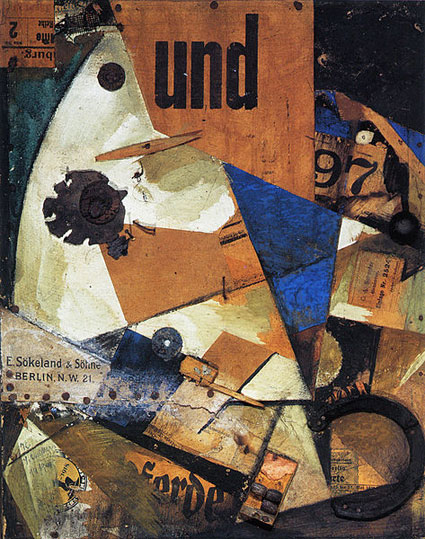 |
| Kurt Schwitters, Das Undbild | "The And-Picture" , collage 1919 Centre Georges Pompidou, Paris |
Quotations
Form and function should be one. —The main principle in Bauhaus design
Architects, painters, and sculptors must recognize anew and learn to grasp the composite character of a building both as an entity and in its separate parts. [...] A modern, harmonic and lively architecture is the visible sign of an authentic democracy. —Walter Gropius
The house is a machine for living in. —Le Corbusier
Art does not reproduce the visible, rather, it makes visible. —Paul Klee
Si ce sont les plumes qui font le plumage, ce n'est pas la colle qui fait le collage. | Feathers may make plumage, but glue does not make collage. —Max Ernst
Like clouds, the forms of the world flow one into the other. The more immediately they unit, the closer they are to the essence of the world. When the physical vanishes, the essence radiates. | Opposites mingle, entwine, dissolve. This removal of boundaries is the road which leads to the essential.—Jean Arp
Less is more. —Ludwig Mies van der Rohe
Nobody will give you freedom. You have to take it. —Meret Oppenheim
The aim of totalitarian education has never been to instill convictions but to destroy the capacity to form any. —Hannah Arendt
The principal goal of education in the schools should be creating men and women who are capable of doing new things, not simply repeating what other generations have done. —Jean Piaget
Not everything that can be counted counts and not everything that counts can be counted. | Imagination is more important than knowledge. For knowledge is limited, whereas imagination embraces the entire world, stimulating progress, giving birth to evolution. | Learn from yesterday, live for today, hope for tomorrow. The important thing is not to stop questioning. | Two things awe me the most: the starry heavens above and the moral universe within.* —Albert Einstein
* Einstein paraphrases Immanuel Kant, Critique of Pure Reason, 1788: "Two things fill the mind with ever-increasing wonder and awe, the more often and the more intensely the mind of thought is drawn to them: the starry heavens above me and the moral law within me." Original words: "Zwei Dinge erfüllen das Gemüt mit immer neuer und zunehmender Bewunderung und Ehrfurcht, je öfter und anhaltender sich das Nachdenken damit beschäftigt: Der bestirnte Himmel über mir, und das moralische Gesetz in mir" (Kritik der praktischen Vernunft, Beschluß).
Terminology
Kunstgeschichte – Art History
Neue Sachlichkeit – New Objectivity
Gesamtkunstwerk – A total, all-encompassing artwork
Einfühlung – Empathy
Prägnanz – Conciseness and effectiveness
Mariano Akerman, Architect and Art Historian
Born in Buenos Aires in 1963, Mariano Akerman studied at the School of Architecture and Urbanism of Universidad de Belgrano, completing his education with a prized graduation project (1987).
From 1991 onwards, he researched the nature and significance of the grotesque in Francis Bacon's paintings, and the evocative character of Louis I. Kahn's architectural projects. In Asia, Akerman has conceived and developed various cycles of educational lectures such as Belgian Art (2005), In the Spirit of Linnaeus (2007), Raisons d’être (2008-10), German Art (2010), and Art in the Picture (2010-11).
Specializing in visual communication, Akerman is an experienced educator. He gives lectures on art and design at renowned institutions among which the Museo Nacional de Bellas Artes in Buenos Aires and the National Museum of the Philippines in Manila. An artist himself, Mariano Akerman exhibits his paintings and collages since 1979. He has been awarded with twelve major international prizes.
Bridging Cultures. "One of the good things about life in Islamabad these days is the sparkling presence of Mariano Akerman. Combining a formidable knowledge of the art canon with his exceptional skills as a teacher, the Argentinean painter and art historian [...] has an unusual capacity to enthrall his audience. One of a rare breed, he is a scholar who delights as much as he informs. [...] It is the combination of his intoxicating enthusiasm with his breadth of interest as an independent scholar that enthralls Mariano’s listeners" (Sara Mahmood).
• Gestalt Collage Contest: "THE WHOLE AND THE PARTS"
The contest. Make your own COLLAGE, showing us what you have learnt from THE GESTALT PROGRAM and win a prize.
Your entry: title and theme. Avoid using the competition title (Gestalt: "The Whole and the Parts") as the title of your entry. Your work needs a title of its own. The contest theme is free. You can develop any aspect or example from the Gestalt lectures.
Who can participate? The competition is open to students and teachers. Each participant is entitled to only one individual entry.
How to submit you entry. What you need to submit is your collage and a page with the collage explanation and your personal details. Explanation and personal details must be printed on a separate page and this page needs to be pasted on the backside of your collage. Your teacher will let us have your collage.
COLLAGE
The collage support must not be bigger than a regular A4 page.
The collage must be made of paper and/or fabric. All types of paper and fabric are welcome.
Your work can also include the use of pencil, ink, gouache, watercolor, etc. But remember that you are expected to submit a collage.
The collage can be hand made, mechanically made (photography, photomontage, computerized design), or both.
There are no color limitations. The collage may be in black and white.
The collage can be made of figures, words, or both. And these can be complete or fragmentary in nature.
The collage style can be figurative, abstract, or both at the same time.
If you use words or text, these need to be in Latin characters. They can be in German, French, Spanish, and/or English.
You may use scissors or may not, but you must to use some kind of glue or any other similar product.
EXPLANATION. Explain what you have made and why it relates to the Gestalt Program. Write it in English. No more than 12 sentences. For clarity purposes your text needs to be printed in a separate page and then pasted on the backside of your collage.
PERSONAL DETAILS. On the same page that has the explanation and which you are going to paste on the backside of your collage, you also need to add and your personal details. Please print them following this order:
1. Collage Title:
2. Full Name:
3. Age:
4. Birthplace:
5. Address:
6. Telephone(s):
7. E-mail:
8. School / University including Department / College:
9. Student / Teacher:
Entries that do not follow the contest rules will be categorically rejected.
When to submit your entry? By November 15, 2011
When will the winners be proclaimed? The winners will be proclaimed during Mariano Akerman’s closing lecture, to be held on November 22, 2011. Selected participants will receive personal invitations to attend the awarding ceremony. There will be prizes and the works of the winning participants will be published on the web.
Note. Entries must be personal, original and unpublished.
Nobody will be held liable for the loss of or damage to entries.
The organizer reserves the right to reject entries that do not follow the rules of the competition.
The organizer will not engage in any oral or written communication with participants regarding their entries or regarding the competition rules.
The entries shall not be returned to the participants after the competition.
Winning participants grant the organizer the right to publish their contributions with proper acknowledgement of the author.
Online Resources
The Swiss-German Project
Einfühlung | Empathy
New Objectivity
Albert Einstein
Roaring Twenties
Gestalt and Its Researchers
Jean Piaget
Bauhaus
Alberto Giacometti
Swiss and German Creators
Elza Adamowicz, Surrealist Collage in Text and Image, Cambridge University Press, 1998. Elza Adamowicz presents an analysis of surrealist collage, both as a technique of cutting and pasting ready made material, and as a subversive and creative strategy. She considers verbal collage, pictorial collage, and the hybrids they generate, and discusses the works of Max Ernst [...] and others. Focusing on the recycling of art-historical icons, the parodic reworking of narrative clichés, the concept of defamiliarisation of the banal, or the relations between part bodies and totalities, she offers close readings of individual collages, and links specific aspects of collage practice to central issues of surrealist aesthetic and political thought. Throughout this well illustrated study Adamowicz confronts the 'monstrous' nature of collage, grounded on excess and composed of irretrievable fragments and hovering signs.
Marjorie Perloff, "Collage and Poetry," Encyclopedia of Aesthetics, ed. Michael Kelly, 4 vols., New York: Oxford University Press, 1998, Vol 1, 384-87.
De la cola y el collage
Reference
Modernity and Modernism
Art Nouveau
Ornament and Crime
Deutscher Werkbund
Expressionism
Erich Mendelsohn
New Objectivity
Functionalism
Le Corbusier
Bauhaus
Walter Gropius
Forms follows function
Paul Klee
Johannes Itten
Max Bill
Josef Albers
Ludwig Mies van der Rohe
International Style
Dada and Surrealism
Jean Arp
Sophie Täuber-Arp
Kurt Schwitters
Incongruous objects
Man Ray
Meret Oppenheim
Le Déjeuner en fourrure
Elsa Schiaparelli
Arberto Giacometti
Max Ernst : Imagery
"Entartete" Kunst
The Gestalt series of lectures by Mariano Akerman is an opportunity to bring a most significant European movement closer to the Pakistani audience. Indeed, experimentation and new objectivity are concepts which have shape European modern cultural identity. As always, Mariano Akerman's formidable knowledge of the art and his exceptional ability to captivate a wide audience will be beneficial for students and teachers alike, bringing the Gestalt closer to their own reality. The message conveyed by Klee, Le Corbusier, Arp, and other prominent artists and architects who have animated the Gestalt and Bauhaus is very much actual in today’s world. —Nicolas Plattner, The Swiss Embassy, Islamabad
Resources
The Gestalt Program Pics
Islamabad, German Embassy in Islamabad, Integrated Whole, Experimentation and Identity, Gestalt: Theory and Design in the New Objectivity Age, 25.10.2011
Islamabad, Deutsche Auslandsvertretungen in Pakistan, Integriertes Ganzes, Experimentieren und Identität, Gestalt: Theorie und Gestaltung im Zeitalter der neuen Sachlichkeit, 28.10.2011
Programa Educativo Gestalt
Sara Mahmood, Mariano Akerman: Bridging Cultures, 28.9.2011
Ishrat Hyatt, Gestalt Programme Launching Event, International The News, 22 October 2011, City News, p. 19 (S).
"The Ambassador of Switzerland ... held Reception Lecture of the Gestalt Educational Program held by Architect Mariano Akerman," Diplomatic Focus, Pakistan, Vol. II, Issue 8-9, October-November 2011, p. 70, photographs by Shabbir Hussain.
Almas Haider Naqvi, "Other is the Same Side of the Picture," Dataline Islamabad, 22 October 2011, p. 4
Maqbool Malik, "Tradition meets Modernisation," The Nation, Pakistan, 24 October 2011
SwissPak Association
Gauhar Zahid Malik, Embassies of Switzerland and Germany present 'Gestalt': Theory and Design in the Age of New Objectivity, Fifteen Educational Lectures by Mariano Akerman, Architect and Art Historian, Pakistan Observer, Pakistan, 3 November 2011, Twin Cities, p. 9
Ilona Yusuf, Enhancing Perception: The Gestalt Lectures and Collage Competition, Blue Chip Magazine, Issue 87, Volume 8, Islamabad, January-February 2012, pp. 16-19, ill.
Sara Mahmood, Mariano Akerman: Bridging Cultures, Blue Chip Magazine, Issue 87, Volume 8, Islamabad, January-February 2012, pp. 20-24, ill.
The contest. Make your own COLLAGE, showing us what you have learnt from THE GESTALT PROGRAM and win a prize.
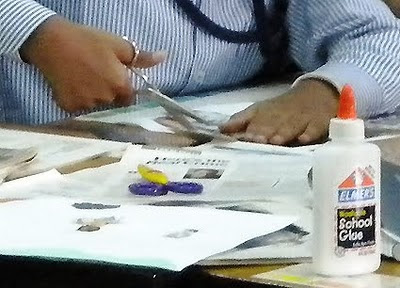 |
| A collage (from the French: coller, to glue) is a work of formal art, primarily in the visual arts, made from an assemblage of different forms, but creating a new, integrated whole. |
Your entry: title and theme. Avoid using the competition title (Gestalt: "The Whole and the Parts") as the title of your entry. Your work needs a title of its own. The contest theme is free. You can develop any aspect or example from the Gestalt lectures.
Who can participate? The competition is open to students and teachers. Each participant is entitled to only one individual entry.
How to submit you entry. What you need to submit is your collage and a page with the collage explanation and your personal details. Explanation and personal details must be printed on a separate page and this page needs to be pasted on the backside of your collage. Your teacher will let us have your collage.
 |
| Gerard Bertrand, Kafka at Kandinsky's or The Birth of Abstract Art, 2002-3 collage or "photographie recomposée" (album) |
COLLAGE
The collage support must not be bigger than a regular A4 page.
The collage must be made of paper and/or fabric. All types of paper and fabric are welcome.
Your work can also include the use of pencil, ink, gouache, watercolor, etc. But remember that you are expected to submit a collage.
The collage can be hand made, mechanically made (photography, photomontage, computerized design), or both.
There are no color limitations. The collage may be in black and white.
The collage can be made of figures, words, or both. And these can be complete or fragmentary in nature.
The collage style can be figurative, abstract, or both at the same time.
If you use words or text, these need to be in Latin characters. They can be in German, French, Spanish, and/or English.
You may use scissors or may not, but you must to use some kind of glue or any other similar product.
EXPLANATION. Explain what you have made and why it relates to the Gestalt Program. Write it in English. No more than 12 sentences. For clarity purposes your text needs to be printed in a separate page and then pasted on the backside of your collage.
PERSONAL DETAILS. On the same page that has the explanation and which you are going to paste on the backside of your collage, you also need to add and your personal details. Please print them following this order:
1. Collage Title:
2. Full Name:
3. Age:
4. Birthplace:
5. Address:
6. Telephone(s):
7. E-mail:
8. School / University including Department / College:
9. Student / Teacher:
Entries that do not follow the contest rules will be categorically rejected.
When to submit your entry? By November 15, 2011
When will the winners be proclaimed? The winners will be proclaimed during Mariano Akerman’s closing lecture, to be held on November 22, 2011. Selected participants will receive personal invitations to attend the awarding ceremony. There will be prizes and the works of the winning participants will be published on the web.
 |
| Richard Nickel, Ornament, photomontage, 2008 |
 |
| Remember Piaget |
Nobody will be held liable for the loss of or damage to entries.
The organizer reserves the right to reject entries that do not follow the rules of the competition.
The organizer will not engage in any oral or written communication with participants regarding their entries or regarding the competition rules.
The entries shall not be returned to the participants after the competition.
Winning participants grant the organizer the right to publish their contributions with proper acknowledgement of the author.
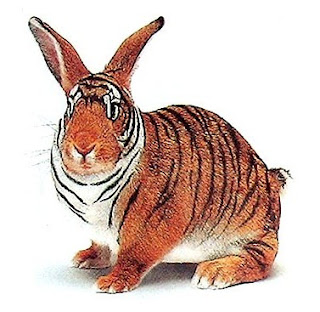 |
| Shouldn't one wish you GOOD LUCK? ANSWERS TO YOUR QUESTIONS |
Online Resources
The Swiss-German Project
Einfühlung | Empathy
New Objectivity
Albert Einstein
Roaring Twenties
Gestalt and Its Researchers
Jean Piaget
Bauhaus
Alberto Giacometti
Swiss and German Creators
Elza Adamowicz, Surrealist Collage in Text and Image, Cambridge University Press, 1998. Elza Adamowicz presents an analysis of surrealist collage, both as a technique of cutting and pasting ready made material, and as a subversive and creative strategy. She considers verbal collage, pictorial collage, and the hybrids they generate, and discusses the works of Max Ernst [...] and others. Focusing on the recycling of art-historical icons, the parodic reworking of narrative clichés, the concept of defamiliarisation of the banal, or the relations between part bodies and totalities, she offers close readings of individual collages, and links specific aspects of collage practice to central issues of surrealist aesthetic and political thought. Throughout this well illustrated study Adamowicz confronts the 'monstrous' nature of collage, grounded on excess and composed of irretrievable fragments and hovering signs.
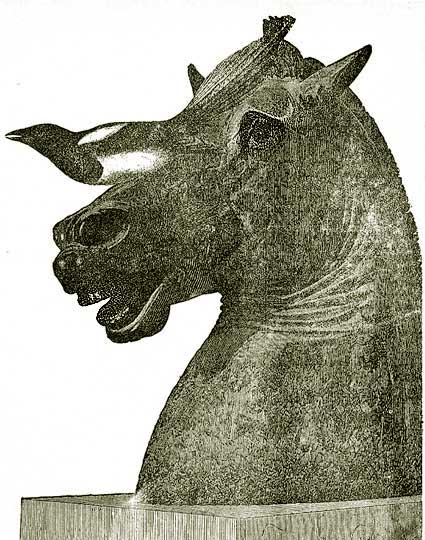 |
| Max Ernst, Collage, 1939 |
 |
| Bonset, Collage, c. 1923. Fries Museum, Leeuwarden |
Reference
Modernity and Modernism
Art Nouveau
Ornament and Crime
Deutscher Werkbund
Expressionism
Erich Mendelsohn
New Objectivity
Functionalism
Le Corbusier
Bauhaus
Walter Gropius
Forms follows function
Paul Klee
Johannes Itten
Max Bill
Josef Albers
Ludwig Mies van der Rohe
International Style
Dada and Surrealism
Jean Arp
Sophie Täuber-Arp
Kurt Schwitters
Incongruous objects
Man Ray
Meret Oppenheim
Le Déjeuner en fourrure
Elsa Schiaparelli
Arberto Giacometti
Max Ernst : Imagery
"Entartete" Kunst
 |
| Collage by Kalsoom Naiwab Inspiration and Expression Collage and Letters Competition Pakistan 2010 |
The Gestalt series of lectures by Mariano Akerman is an opportunity to bring a most significant European movement closer to the Pakistani audience. Indeed, experimentation and new objectivity are concepts which have shape European modern cultural identity. As always, Mariano Akerman's formidable knowledge of the art and his exceptional ability to captivate a wide audience will be beneficial for students and teachers alike, bringing the Gestalt closer to their own reality. The message conveyed by Klee, Le Corbusier, Arp, and other prominent artists and architects who have animated the Gestalt and Bauhaus is very much actual in today’s world. —Nicolas Plattner, The Swiss Embassy, Islamabad
Resources
The Gestalt Program Pics
Islamabad, German Embassy in Islamabad, Integrated Whole, Experimentation and Identity, Gestalt: Theory and Design in the New Objectivity Age, 25.10.2011
Islamabad, Deutsche Auslandsvertretungen in Pakistan, Integriertes Ganzes, Experimentieren und Identität, Gestalt: Theorie und Gestaltung im Zeitalter der neuen Sachlichkeit, 28.10.2011
Programa Educativo Gestalt
Sara Mahmood, Mariano Akerman: Bridging Cultures, 28.9.2011
Ishrat Hyatt, Gestalt Programme Launching Event, International The News, 22 October 2011, City News, p. 19 (S).
"The Ambassador of Switzerland ... held Reception Lecture of the Gestalt Educational Program held by Architect Mariano Akerman," Diplomatic Focus, Pakistan, Vol. II, Issue 8-9, October-November 2011, p. 70, photographs by Shabbir Hussain.
Almas Haider Naqvi, "Other is the Same Side of the Picture," Dataline Islamabad, 22 October 2011, p. 4
Maqbool Malik, "Tradition meets Modernisation," The Nation, Pakistan, 24 October 2011
SwissPak Association
Gauhar Zahid Malik, Embassies of Switzerland and Germany present 'Gestalt': Theory and Design in the Age of New Objectivity, Fifteen Educational Lectures by Mariano Akerman, Architect and Art Historian, Pakistan Observer, Pakistan, 3 November 2011, Twin Cities, p. 9
Ilona Yusuf, Enhancing Perception: The Gestalt Lectures and Collage Competition, Blue Chip Magazine, Issue 87, Volume 8, Islamabad, January-February 2012, pp. 16-19, ill.
Sara Mahmood, Mariano Akerman: Bridging Cultures, Blue Chip Magazine, Issue 87, Volume 8, Islamabad, January-February 2012, pp. 20-24, ill.






